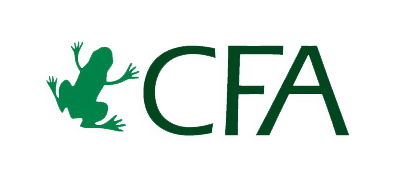Welcome to the Conservation Finance Guide. The overall goal is to provide practical tools to support the rapid expansion of sustainable finance mechanisms that generate long-term funding for biodiversity conservation.

Welcome to the Conservation Finance Guide. The overall goal is to provide practical tools to support the rapid expansion of sustainable finance mechanisms that generate long-term funding for biodiversity conservation.

Fee systems, particularly entrance fee systems, are often developed through central planning and implemented by the national PA authority, but that authority may assign fee management to a specific PA agency (see the US Recreational Fee Demo program; Summers 2005). In some countries, PA or site management agencies have the flexibility to develop their own fee systems on a case-by-case basis, which can be a way to facilitate local ownership of the system (this is how activity fee systems are usually established). Either way, a PA management agency will ideally have the autonomy to adjust fees according to visitor numbers and preferences, and to retain revenues for reinvestment, which can optimize management efficiency (see 2.3.5). In some systems, this has entailed a gradual process of legal reform. For instance, the United States Congress approved legislation in the 1950s that allowed for entrance fees to national parks. It was not until 1996 that the four land management agencies were given authority to levy and increase fees independent of Congress. This legislation – the Recreational Fee Demo program – gave each land management agency the autonomy required to meet the needs of their own PAs, and specified that 80 percent of revenue was to be used in the site where it was collected (Summers 2005). Collaboration between agencies setting fees autonomously within a country will usually be beneficial for overall conservation impact (see price competition in Tanzania; Spenceley, Rylance and Laiser 2017).
If a management agency is given the autonomy to collect and retain tourism fees and allocate revenues, then it must have strong enough institutional capacity and accountability for effective and efficient management of these revenues (efficient management is closely linked to the recovery of PA operating costs from tourism; Eagles & Hillel 2008). A capacity building program consisting of short courses and workshops, staff exchanges, mentoring, conferences, and twinning of PAs is likely to be necessary (Leung et al. 2018). A targeted marketing campaign can be used to help attract a regular flow of visitors, or a specific group of visitors, and build acceptance of fees among specific groups of stakeholders, but most PAs will not have the expertise for this and will have to work with tourism agencies or contract for it (Font, Cochrane & Tapper 2004). When the institutional capacity of a PA agency is limiting efficient fee collection, it may be necessary to transfer management responsibility to, or partner with, a private entity (see section 3).
Partnerships with community organizations, or co-management, can help to build community support for fee systems, represent community views, and reduce conflict. Bunaken National Park, a model for marine co-management in Indonesia, is managed by an advisory board representing local communities, tourism operators, and various government agencies (UNDP 2012). In partnership with the Indonesian Department of Nature Conservation, the board has designed a practical and efficient entrance fee system that generates revenues for the MPA and its residents, funding a joint patrol system – which directly involves local individuals in monitoring and enforcement; conservation projects; and a small grants program for community development projects.
Fees can be collected on site (e.g. at an entrance gate, parking area) or off site (e.g. online, at management authority headquarters, or through tour operators as part of a tour package – in which case passes would be checked upon entry or spot-checked). Cash-free systems of entry, where the visitor has paid in advance, can reduce the risk of corruption and bribery. For example, the Kenya Wildlife Service (KWS) has introduced a system whereby visitors pay cash at KWS headquarters to charge an electronic debit card, which is then swiped on entry to a PA (Font, Cochrane & Tapper 2004). Overall takings increased on introduction of this system. Fee collection via operators can reduce administration costs, but it also reduces the opportunity for interaction with visitors and the flexibility to rapidly adjust fees – tour operators may need advance notice of up to 18 months (Lindberg 2001).
All PA systems should use accounting software for the collection of data on PA management needs and costs, revenue generation, and budgets and expenditures (operational and capital). PA site managers should be trained on costing activities and using accounting software. Revenues should be tracked using reliable and transparent recording systems. If a PA authority lacks financial management capacity, it can be advantageous to channel funds into an independent Conservation Trust Fund.
Overview
1. Understanding Entrance and Activity Fees
1.2 Stakeholders
1.3 Potential in Monetary Terms
1.4 When is it Feasible and Appropriate?
1.5 Strengths, Risks, and Challenges
2. Methodology
2.1 Scoping
2.2 Feasibility
2.3 Design
2.4 Implementation
2.5 Monitoring, Evaluation, and Adaptive Management
3. How to Improve the Impact of Existing Systems
Appendix: Generic Terms of Reference (ToR) for a Feasibility Assessment